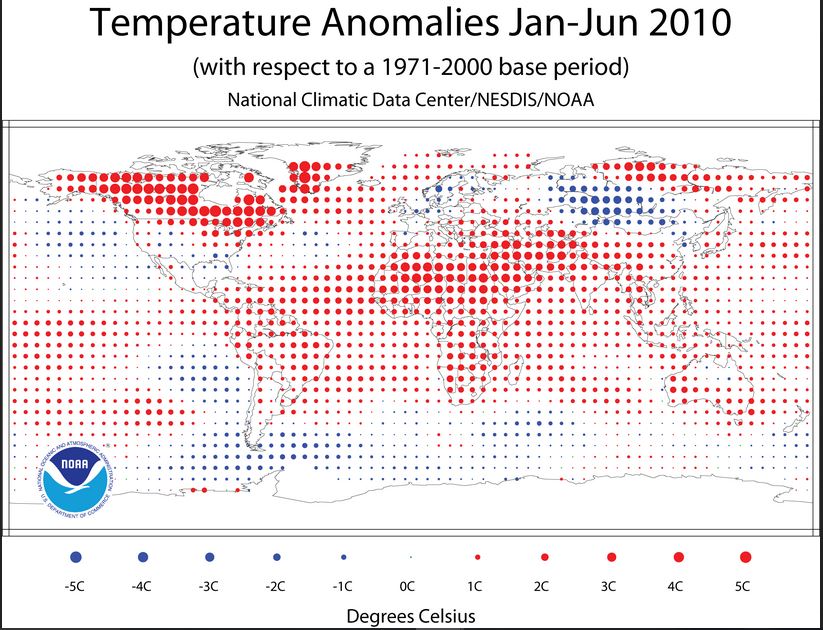“UNFOUNDED ALARMISM”
by Dr. Madhav Khandekar and Tom Harris, ©2017

(Aug. 23, 2017) — Former Vice-President Al Gore could not have chosen a worse time to release his new climate change film, An Inconvenient Sequel: Truth to Power. For, ‘global temperatures’ were higher in 2006 – 2007 when An Inconvenient Truth was released and Gore won the Nobel Peace Prize and there has been no additional warming since 2000. We are also currently setting a record for the least amount of extreme weather (EW) in history.
Even a long-term view shows that Gore’s concerns are misplaced. Stockholm University sea level expert, Dr. Nils-Axel Mörner estimates that sea level will rise only about five cm (about two inches) in the next 100 years. Amazingly, the uncertainty on this estimate is plus or minus 15 cm, because of the large uncertainty in future climate. Regardless, even the highest of Mörner’s forecasts poses no danger to most of the low-lying areas of the world.
Similarly, the data tabulated by the U.S. State Climate Extremes Committee shows that not a single state-wide EW record was set in 2017, 2016, or 2015. One has to go back to the 1930s to find a period when state-wide EW records were being set on a regular basis.
Worldwide, tropical cyclone activity is now at its lowest level in 40 years and no major hurricane (category 3 or above) has made landfall in the U.S. in 12 years. University of Colorado Boulder Professor Roger Pielke Jr. calls this “a streak of good fortune not seen in the historical record.”
The data for floods, droughts, and tornadoes show little to no indication that these events are becoming more severe or frequent either.
Gore’s unfounded alarmism takes attention away from preparing for naturally-occurring events. Especially important is preparing for dangerous heat waves, whose deadly impact can be mitigated by making air-conditioned facilities more widely available.
For example, in the 1995 heat wave in Chicago, about 500 elderly people died because there were no air-conditioners in their homes. Yet during the 2011 heat wave, not a single person died from the heat even though dangerously high temperatures continued for over a week. The difference? The city opened air-conditioned community centers for those who lacked such facilities in their homes.
It is a similar story in Canada. In July 1936, the deadliest heat wave on record struck central Canada and over 1,000 people died (250 in Toronto and vicinity alone) because few houses had air-conditioning. Today, air-conditioners are the norm in Toronto and southern Ontario so heat waves of 35 degrees C (95 degrees F) and higher does not lead to fatalities as it did in 1936.
Contrast this with most of Europe where even rich nations like Switzerland and Germany still do not have many air-conditioned facilities. Instead of concentrating on providing more air-conditioning in community centers and private houses to help reduce heat related deaths, the EU countries appear obsessed with reducing their carbon dioxide (CO2) footprint in the vain hope that this will reduce global warming and so lessen heat waves and other EW events.
The results have been tragic. During the 2003 heat wave in western Europe, about 36,000 people, mostly elderly living in non-air-conditioned rooms or houses in Paris, died. The same occurred during the 2010 Russian heat wave when 50,000 people died in and around Moscow, due to heat exhaustion and dehydration. Many of these deaths could have been prevented if adequate air-conditioned facilities had been available.
Rather than waste money trying to prevent climate and weather-related events from occurring through misguided CO2 reduction policies, the most cost-effective strategy is for governments to accept such phenomena as naturally-driven and plan appropriately. The inconvenient truth is that thousands of people will die needlessly if they do not.
____________________________________________________
Dr. Madhav Khandekar is a former Research Scientist with Environment Canada and has been in the weather and climate science for almost 60 years. He was an Expert Reviewer for the 2007 climate change documents prepared by the UN climate body, the IPCC. Tom Harris is Executive Director of the International Climate Science Coalition.


Dr. Madhav Khandekar & Tom Harris letter-to-the-editor cite NOAA single state-wide extreme weather data but ignore NOAA’s global temperature data.
According to NOAA, “Temperatures measured on land and at sea for more than a century show that Earth’s globally averaged surface temperature is rising” and “(2016) was the third year in a row, and the fifth time since 2000, that a new temperature record was set.”
NOAA’s data refutes the opinion piece used by Harris’s and Khanderkar falsely stating, “there has been no additional warming since 2000.”
Sixteen of the 17 warmest years in the 136-year record all have occurred since 2001, with the exception of 1998. The year 2016 ranks as the warmest on record. (Source: NASA/GISS).
When Dr. Khandekar & Mr. Harris ask governments to accept global warming is a “naturally-driven” and not related to CO2 emissions, they are rejecting climate science.
“…the role of carbon dioxide and other greenhouse gases as the primary driver for the warming the Earth has experienced over the past several decades is extremely well established.” https://www.ametsoc.org/ams/index.cfm/about-ams/ams-position-letters/letter-to-doe-secretary-perry-on-climate-change/